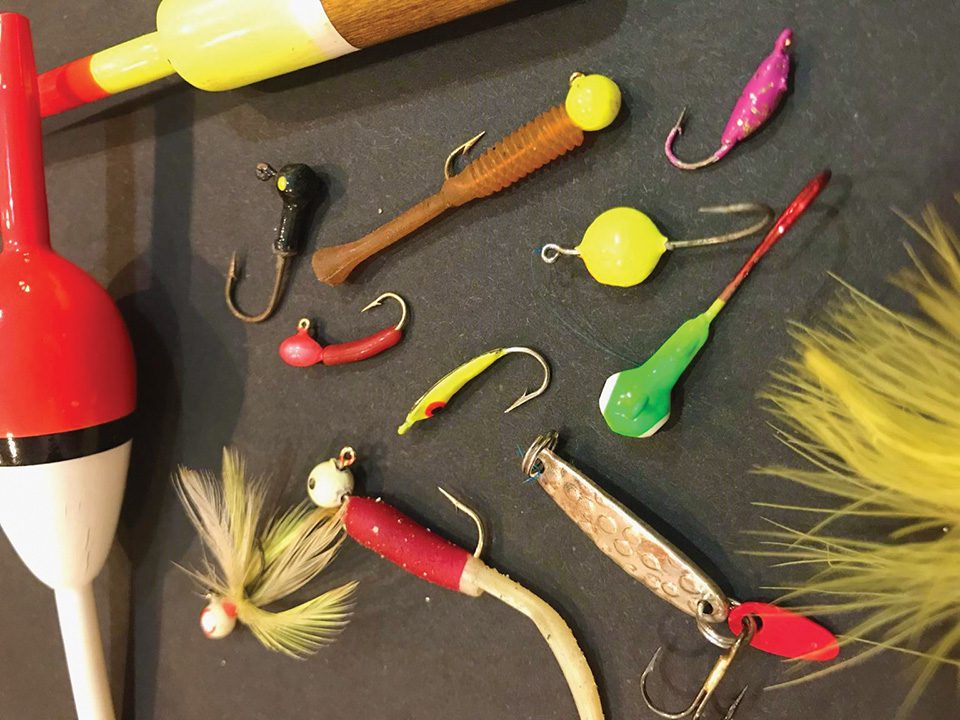By Chris Beardsley
Bigger is better, right? Maybe, but when it comes to spring bluegills I like to go small.
Everyone knows the ubiquitous bluegill or bream. A member of the sunfish family, the bluegill can be found in lakes, ponds and streams from the Rockies to Florida and is arguably one of the most popular, best known and most commonly caught freshwater fish. They are, however, the quintessential bait stealers and are often the cause of frustration, sometimes thrown back because they’re “just bluegills.” It took me a while to realize that the diminutive bluegill can be a bruiser and is hard to beat beer battered with a plate of fries.
Going small is of course relative. Bluegills are small to begin with, and to put it into perspective, winter and early spring fishing calls for jigs as small as 1/64 of an ounce. Fast-forward to spring and comparatively large jigs of 1/32- to 1/16 of an ounce become the norm.
Orange, yellow, white, chartreuse and purple Teardrop jigs, and red Rat Finky and yellow or black ball jigs rule the day. Tipping the jigs with a wax worm, several red spikes or some other meaty offering is irresistible, especially when vertically jigged. The tiny baits are virtually weightless and casting, though not impossible, does create challenges. Vertical jigging keeps the jig and bait combo on the spot and in the strike zone far longer than drifting baits beneath a float.
I’ve used crankbaits, spinnersbaits and bucktails larger than most bluegills I’ve caught, but big bull ’gills longer than 10 inches are pound-for-pound one of the strongest fighting fish that swims. They are great fun on very light tackle. A 4-foot, 6-inch to 5-foot ultra-light spooled with 4-pound mono is about perfect for catching the little brutes. If you plan to cast, the ultra-light is great, but a light action 6-foot, 6-inch crappie rod can provide a bit more distance.
In early Spring, during prespawn when water temps push over 50 degrees, big bulls will begin moving out of their winter areas and start gravitating toward mid-depth structure. These areas include weed edges, rock piles or submerged timber; anything that provides protection will be sought out. Muddy bottoms and sunken brushpiles can be prime areas.
Locating structure can be tricky, but when fishing muddy lakes look for slight changes in depth including depressions only inches deeper than the surrounding area. These “bowls” are big bull hotspots.
A jig tipped with waxworms, spikes or grasshoppers work well here, but a 1-inch chunk of nightcrawler or leaf worm is better. If available, hellgrammites—sometimes locally called “wigglers”—will outshine any other offering. They’re typically more expensive, but you will not be disappointed. Be prepared, however, because largemouth bass love them too and will certainly test your light tackle.
Vertical jigging is a great technique. Dangling a tempting morsel over a rock pile, suspended weeds, sunken brush or muddy bottom can mean the difference between fishing and catching.
Sometimes bigger is better, but for these feisty little Frisbees, smaller is often your best bet.

